For anyone who’s had to go gluten free, you know it’s not just about cutting out bread. It’s reading labels, second-guessing restaurant menus, and sometimes just staring into your fridge wondering what’s safe to eat. Whether you’re navigating celiac disease, gluten intolerance, or just experimenting to see if it helps you feel better, the goal stays the same: build a way of eating that doesn’t feel like a full-time job.
This article pulls together the stuff that actually helps. Not a lecture, not a diet ad. Just a solid gluten free meal plan that covers what to eat, how to prep it, and how to not lose your mind while figuring it all out. Let’s make this work without overcomplicating it.
Planning a gluten free diet can get frustrating fast if your recipes are scattered all over the place or buried in saved folders you forgot about. That’s exactly why we created ReciMe. Instead of juggling screenshots, blog links, and phone notes, we wanted one app where we could save everything we actually use, organize it into real meal plans, and instantly generate grocery lists that make sense. When you’re trying to stay consistent with gluten free eating, having a simple way to see your plan at a glance and cook without overthinking it makes a big difference. ReciMe isn’t just for collecting recipes – it’s how we keep gluten free eating manageable without turning it into a daily project.

Download for free from the App Store on iPhone and iPad

ReciMe Android App
What Gluten Free Really Means (And What It Doesn’t)
“Gluten free” isn’t just about avoiding bread and pasta. Gluten is a protein found in wheat, barley, and rye. That includes things like flour, malt, and anything made with those grains. It also sneaks into soy sauce, soups, salad dressings, and plenty of other packaged foods. If you’ve ever had to Google an ingredient at the store, you get it.
But here’s what gluten free doesn’t mean:
- It doesn’t mean low carb
- It doesn’t mean healthy by default
- It definitely doesn’t mean flavorless
You can eat a totally satisfying, balanced diet without gluten. You just need a plan that includes enough variety and doesn’t rely too heavily on packaged gluten free “alternatives” that are often expensive and not always that great nutrition-wise.
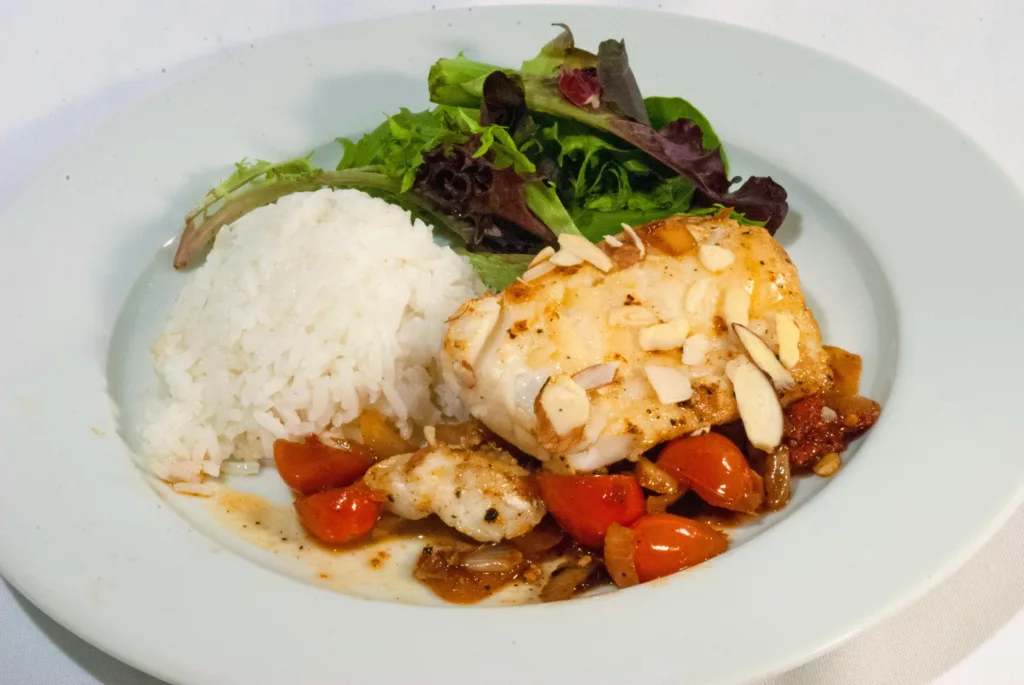
The Basic Game Plan: What a Gluten Free Week Can Look Like
A good meal plan is built around simplicity, repetition where it helps, and a little flexibility. You don’t need seven totally different dinners. You need a handful of reliable, go-to meals that you can rotate, prep ahead, and modify based on what’s in your fridge.
Here’s what a balanced gluten free week should include:
- A mix of proteins: chicken, turkey, eggs, tofu, fish, beans
- Naturally gluten free grains: rice, quinoa, cornmeal (like for polenta), gluten free oats
- Plenty of vegetables and fruits
- Healthy fats: olive oil, nuts, avocado
- A few smart snacks: plain yogurt, hard-boiled eggs, fruit, hummus with veggies
And yes, a little room for something sweet or fun if that fits your day. Being gluten free doesn’t mean skipping dessert forever.
How to Make Meal Planning Less Painful
Start small. Don’t try to overhaul your whole diet at once. Begin by planning a few gluten free meals you actually want to eat, and repeat those throughout the week. Prepping just a few components can make a big difference. For example:
- Roast a tray of veggies to toss into bowls, wraps, or egg dishes
- Cook a pot of quinoa or rice for a base
- Make a simple vinaigrette to use all week
- Hard boil a few eggs to grab as snacks
If that’s all you do on Sunday, you’re already ahead.
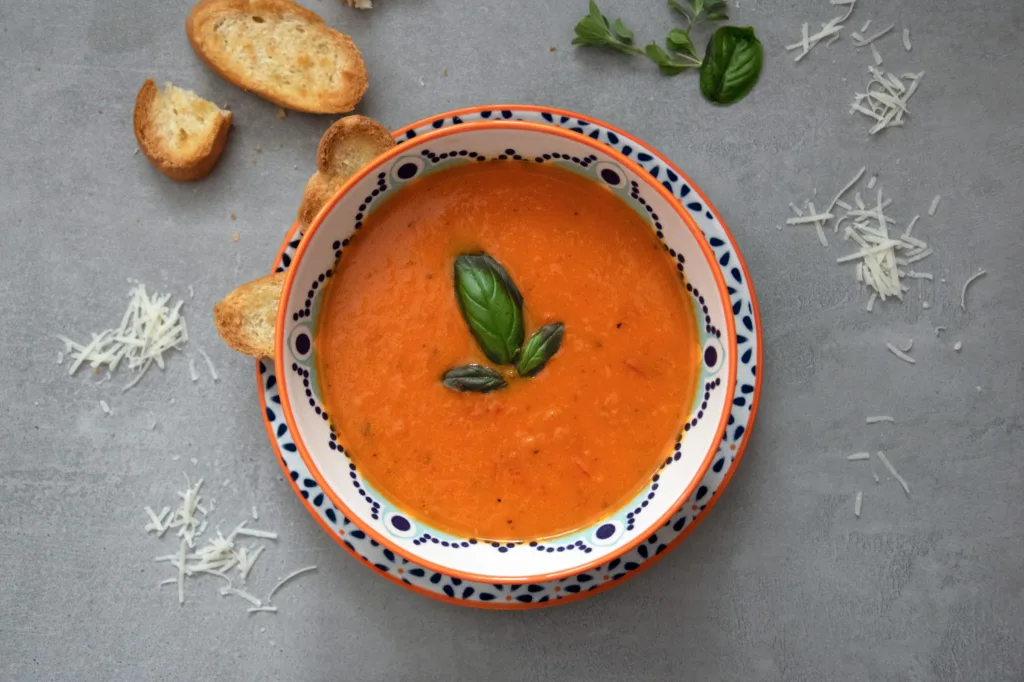
7-Day Gluten Free Meal Plan
This sample plan gives you structure without locking you into every bite. Each day includes breakfast, lunch, dinner, and a snack, all naturally gluten free with real ingredients.
Day 1
Breakfast – Steel-Cut Oats with Raspberries
A warm, filling bowl of certified gluten free steel-cut oats topped with fresh raspberries and just a sprinkle of brown sugar. It’s a simple start that balances fiber and comfort.
Lunch – Tomato Soup with Cucumber-Avocado Salad
Smooth, creamy tomato soup paired with a quick salad of sliced cucumber and diced avocado, tossed in olive oil and red wine vinegar. Light but satisfying.
Dinner – Cajun Salmon with Potato Salad and Green Beans
Oven-roasted salmon seasoned with Cajun spices, served with classic potato salad and a side of steamed green beans. No fuss, plenty of flavor.
Snack – Broccoli with Avocado-Yogurt Dip
Crunchy broccoli florets dipped in a creamy mix of yogurt and avocado. A refreshing break from sweet snacks.
Day 2
Breakfast – Omelet Muffin with Blueberries
One protein-packed muffin baked with veggies and eggs, plus a side of juicy blueberries. Easy to grab and go if your morning’s already full.
Lunch – Zucchini Noodles with Turkey Bolognese
Zoodles topped with a rich, hearty turkey Bolognese. Served with a crisp apple on the side for something sweet and fresh.
Dinner – Vegetarian Niçoise Salad
A layered plate of hard-boiled eggs, green beans, tomatoes, and olives with a drizzle of vinaigrette. No fish, still totally filling.
Snack – Raspberries and Peanuts
A handful of fresh raspberries and two tablespoons of dry-roasted peanuts. Crunchy, tart, and just the right amount of salty.
Day 3
Breakfast – Oatmeal with Raspberries
Another take on oatmeal, this time quick-cooked for a faster morning. Add raspberries and you’re good to go with fiber and fruit.
Lunch – Turkey Bolognese Zoodles with Apple
Leftover turkey Bolognese over zoodles, plus a crisp apple. It’s quick, reheats well, and gives you some breathing room in your day.
Dinner – Polenta Bowl with Roasted Veggies and Fried Egg
Creamy polenta topped with a mix of roasted vegetables and a sunny-side-up egg. Cozy and colorful.
Snack – Celery with Avocado Dip
Celery sticks for crunch, avocado dip for creaminess. Not fancy, just solid.
Day 4
Breakfast – Omelet Muffin and Blueberries
Another muffin from the batch you prepped, this time with more berries. No mess, no thinking required.
Lunch – Zucchini Noodles with Turkey Bolognese
Zoodles again, because they work. Keeps things easy if you’re already juggling too much.
Dinner – Stuffed Peppers with Sweet Potato Fries
Peppers filled with beef and veggies, like a low-carb cheesesteak. Sweet potato fries on the side for that crisp-and-soft combo.
Snack – Broccoli and Avocado Dip
Quick to grab, easy to snack on. Dip adds a bit of healthy fat to keep you full.
Day 5
Breakfast – Omelet Muffin and Pear
One more muffin, plus a fresh pear for crunch and sweetness. Keeps things light and easy.
Lunch – Zoodles with Turkey Bolognese
Repeat from earlier in the week because if it’s already made, why not use it?
Dinner – Eggplant Parmesan with Spinach Salad
Breaded (but gluten free) baked eggplant layered with tomato sauce and cheese. Served with fresh spinach, vinaigrette, and a few slices of avocado.
Snack – Raspberries
Just a handful of ripe raspberries. Sweet, simple, nothing else needed.
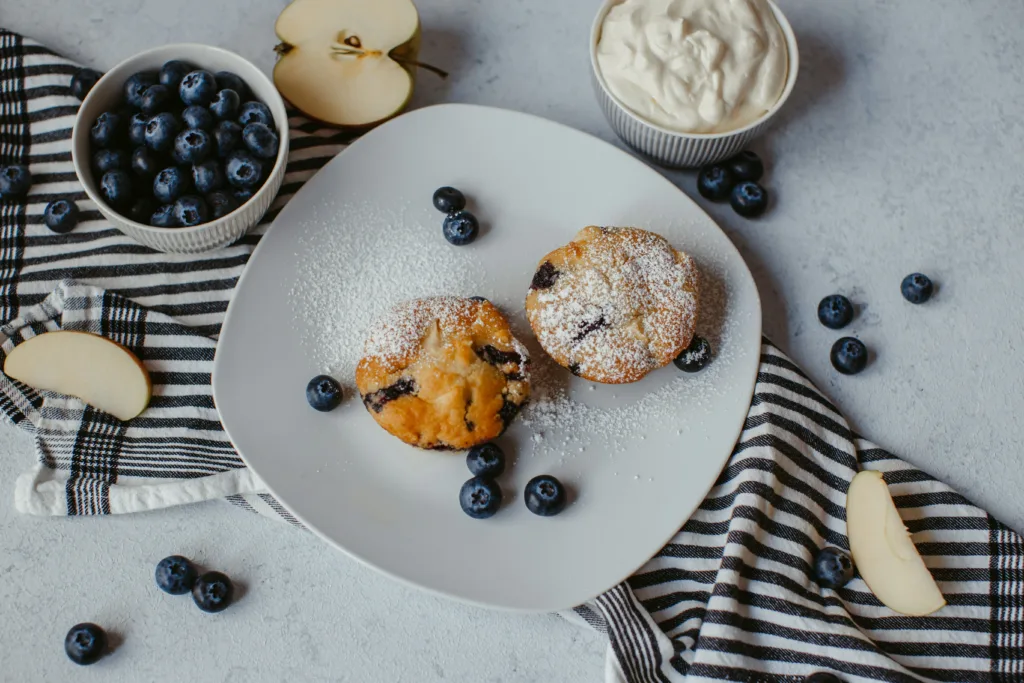
Day 6
Breakfast – Omelet Muffin and Blueberries
You know the drill by now. Prep once, eat all week. Blueberries round it out.
Lunch – Chickpea and Tuna Salad in a Jar
Packed lunch done right. Chickpeas, tuna, and crunchy veggies layered in a mason jar with dressing at the bottom. Shake and eat.
Dinner – Thai-Style Pork with Rice Noodles and Cucumber
Rice noodles tossed with tender pork, cucumber slices, and a sesame-lime dressing. A little spicy, a little cooling.
Snack – Blackberries
Tart and juicy blackberries. A quick win when you need a break.
Day 7
Breakfast – Banana Pancakes with Maple Syrup
Made from mashed bananas and eggs, these pancakes are naturally gluten free. Add a bit of maple syrup and fresh raspberries on top.
Lunch – Tuna Power Salad in a Jar
Another mason jar salad with tuna, chickpeas, and greens. Keeps well, tastes fresh.
Dinner – BBQ Chicken Tacos with Red Cabbage Slaw
Shredded BBQ chicken tucked into gluten free corn tortillas with a tangy red cabbage slaw and a spoonful of black beans on the side.
Snack – Hard-Boiled Egg
One egg, a pinch of salt, maybe pepper. Classic, portable, and protein-rich.
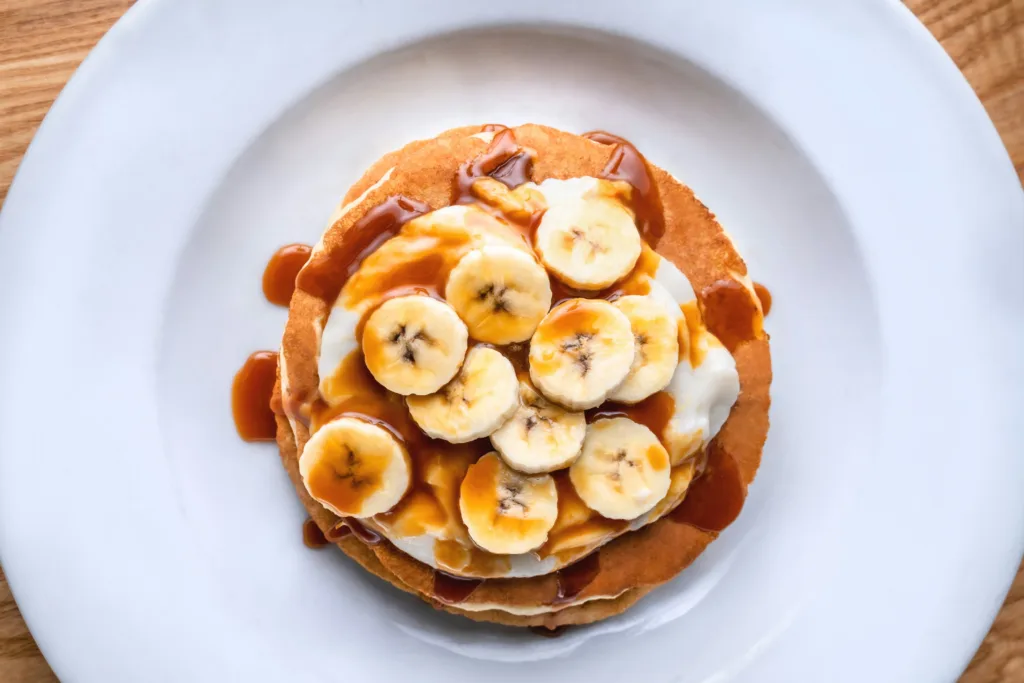
Gluten Free Ingredients You Can Always Trust
When in doubt, stick to the basics. These are naturally gluten free and easy to build meals around:
- Grains: Rice, quinoa, cornmeal, buckwheat, gluten free oats
- Proteins: Eggs, tofu, poultry, beef, pork, fish, shellfish, beans, lentils
- Dairy: Milk, cheese, plain yogurt (check for additives)
- Fruits and veggies: All fresh produce is gluten free
- Pantry staples: Olive oil, vinegar, salt, pepper, herbs, spices
Always check labels on processed foods. Gluten hides in spice blends, sauces, and even some canned goods.
Don’t Forget the Snacks
Having gluten free snacks ready keeps you from scrambling when you’re hungry. A few easy ones to keep around:
- Greek yogurt with fruit
- Apple slices with peanut butter
- Veggies with hummus or avocado dip
- Rice cakes with almond butter
- Hard-boiled eggs
- Small handful of nuts
You don’t need fancy gluten free snack bars. Real food usually does the job better anyway.
Hidden Gluten to Watch Out For
You’d be surprised where gluten shows up. Keep an eye on:
- Soy sauce (use tamari instead)
- Packaged soups
- Salad dressings
- Imitation crab
- Beer (most of it isn’t gluten free)
- Some bouillon cubes or seasoning mixes
- Pre-marinated meats
Pro tip: When in doubt, Google the brand and product. Or just keep a running list of your go-to safe picks.
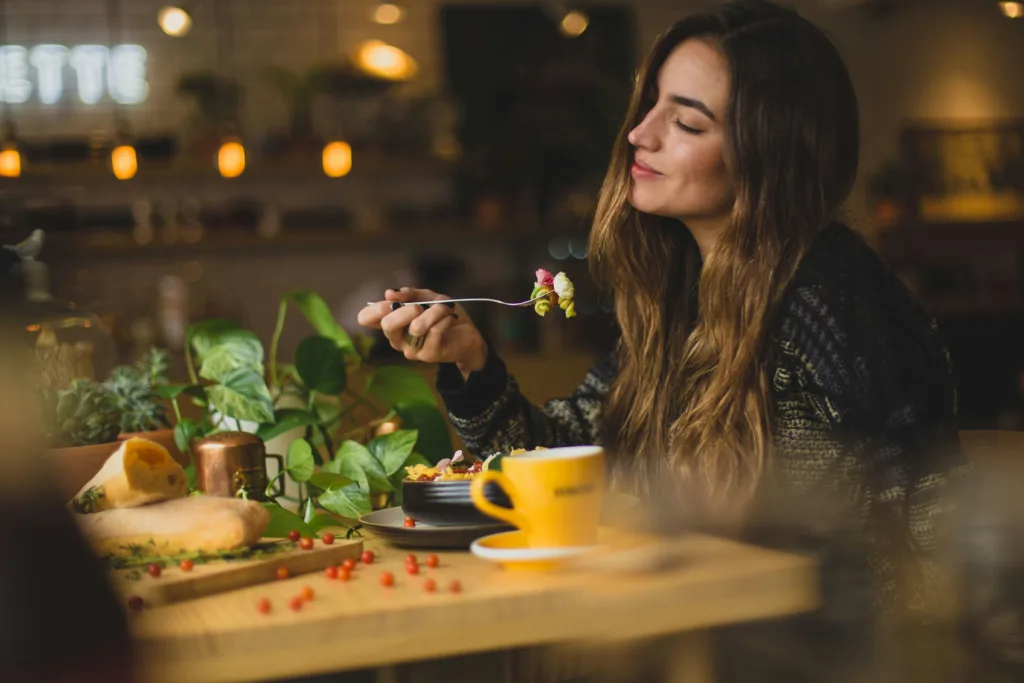
Eating Out Without Stress
Going out to eat when you’re gluten free can feel a bit like gambling with your dinner. You scan the menu, ask the usual questions, and cross your fingers that the kitchen gets it right. If you have celiac, that stress doubles, because even a little bit of cross-contact can cause a reaction. But eating out doesn’t have to be a full-on ordeal.
A good first move is sticking to spots that already offer gluten free options or clear labeling. It makes everything easier from the start. And when you’re looking at the menu, keep things simple. Grilled chicken, plain rice, roasted veggies, these are your safest bets. If something’s breaded, fried, or smothered in sauce, it’s worth asking how it’s made. And yes, you can totally ask about marinades, salad dressings, and whether that fryer also handles onion rings.
Don’t feel awkward about requesting no croutons or double-checking on soy sauce. Most servers are used to it and will either know right away or ask the kitchen. It’s not weird. It’s just part of ordering when you’ve got food restrictions. And if something doesn’t feel right? Ask again. Better safe than stuck with stomach issues later.
Making It Work for More Than a Week
A good gluten free plan isn’t something you do for a few days and forget. It’s a rhythm that gets easier with time. Here’s what helps long term:
- Rotate favorite meals weekly
- Keep a list of gluten free brands that you trust
- Batch cook staples like grains and roasted veggies
- Double recipes and freeze extra portions
- Save recipes in one place (apps like ReciMe help if you’re tired of the note scramble)
And don’t stress if you repeat meals. The goal is ease, not endless variety.
Conclusion
Gluten free eating doesn’t have to feel like another full-time job. Once you get a rhythm going with meals you actually like, it gets a lot easier to stick with it. The real trick is not trying to make every week different or overloading yourself with new recipes. Just focus on what works, what tastes good, and what makes your day smoother. Having a plan helps. So does having your recipes, grocery list, and meal ideas in one spot. That’s where you can lean on ReciMe, because no one wants to dig through old bookmarks when they’re just trying to figure out what’s for dinner. If gluten free eating is part of your life now, the goal isn’t to make it exciting all the time. It’s to make it doable.
FAQ
What’s the easiest way to start eating gluten free without redoing my whole kitchen?
Start with meals you already like that are naturally gluten free. Things like rice bowls, omelets, roasted veggies with protein. You don’t need special products or gluten free versions of everything right away.
Can I still eat carbs on a gluten free meal plan?
Absolutely. Gluten free doesn’t mean carb free. Rice, potatoes, corn, gluten free oats, and even some pastas made from quinoa or brown rice are all fair game.
Do I need to avoid all sauces and dressings?
Not all, but a lot of them can have hidden gluten. Soy sauce is a big one. Check the label or use brands you trust. Tamari is a good gluten free swap for soy sauce.
What if I don’t want to cook every night?
You don’t have to. Make double batches when you do cook and use the leftovers for lunch or dinner the next day. Rotating a few go-to meals helps too. You’re not running a restaurant.
Can I eat out and still stick to gluten free?
Yes, you can. Just stick to simple meals and don’t be afraid to ask questions. Most places are used to it by now and it’s fine to ask for no croutons, check on sauces, or confirm how something’s cooked.
How do I know if a packaged food is really gluten free?
Check the label carefully. Some products are certified gluten free, others just say it. If you’re dealing with celiac or serious sensitivity, it’s worth checking the brand or reaching out to them directly. And once you find reliable ones, save them so you don’t have to repeat the work.
Is it possible to make gluten free eating more organized?
Yes, and that’s why we built ReciMe. It helps you keep all your recipes in one spot, build out your meal plan, and get your grocery list done without any guesswork. Less chaos, more food that works.
